Cloud Computing – A tesseract perspective
As humans, our perception of the universe is inherently limited to a three-dimensional view. Introducing a fourth dimension opens the door to mind-bending complexities, such as visualizing a tesseract. However, the fourth dimension we are referring to here is none other than time. While the strongest gravitational force we experience is that of Earth, the idea of time travel to foresee the future remains nearly impossible.
(A #tachyon particle, for instance, is a hypothetical entity theorized to travel faster than light.) However, with the help of simple #linear #regression models, we can make limited predictions or forecasts—provided we have sufficient input and output data with a strong #correlation coefficient close to 1.
Applying the concept of the fourth dimension to cloud adoption strategies, we developed a practical use case for IT infrastructure. Below are the calculations and insights we derived from this approach.
Use Case: A company plans to create a robust IT infrastructure roadmap and want to make a decision on whether to continue their existing on-premise infrastructure or adopt a cloud strategy and the total capacity required for the IT infrastructure was –
- Let’s say they require 1000 VMs with the average VM being:
- 2 vCPUs
- 8 GB memory
- 200 GB storage @ 300 IOPS
- Hence we need:
- 2000 vCPUs
- 8 TB memory
- 200 TB @ 300,000 IOPS
How we did a 3-year TCO comparison of Pinakastra™ with other private/hybrid cloud options

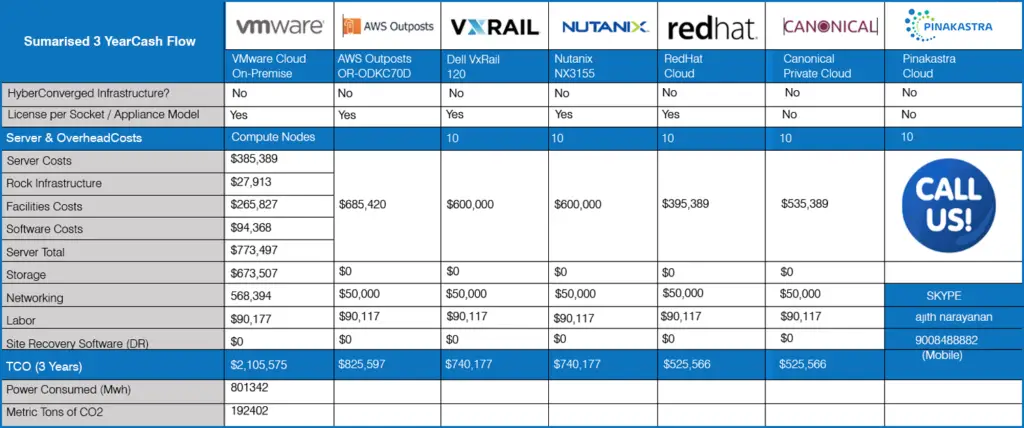
3 Year total cost of ownership when using public clouds

How the licensing of cloud matters when infrastructure at scale.
Note:- Cloud license comparison for only non-HCI models (HW cost excluded)
(No of nodes = baremetal servers)
- Canonical – Perpetual license per CPU sockets (Upfront cost is high, Linear cost at scale)
- Pinaka – Perpetual license per CPU sockets (Upfront cost is low, Linear cost at scale)
- VMware – License per CPU Cores (Upfront cost is high & cost as multiples of socket pair at scale)
- Redhat – License per CPU sockets (Upfront cost is high & cost as multiples of socket pair scale)
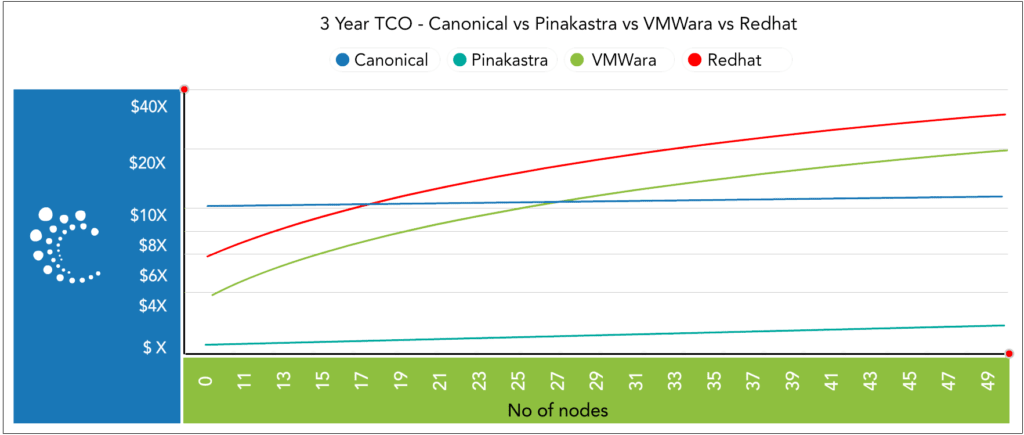
More info – Breakdown of the TCO calculations
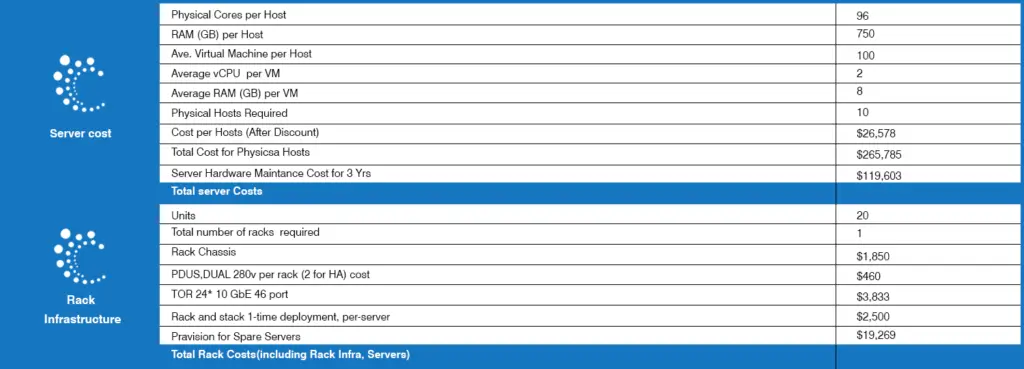
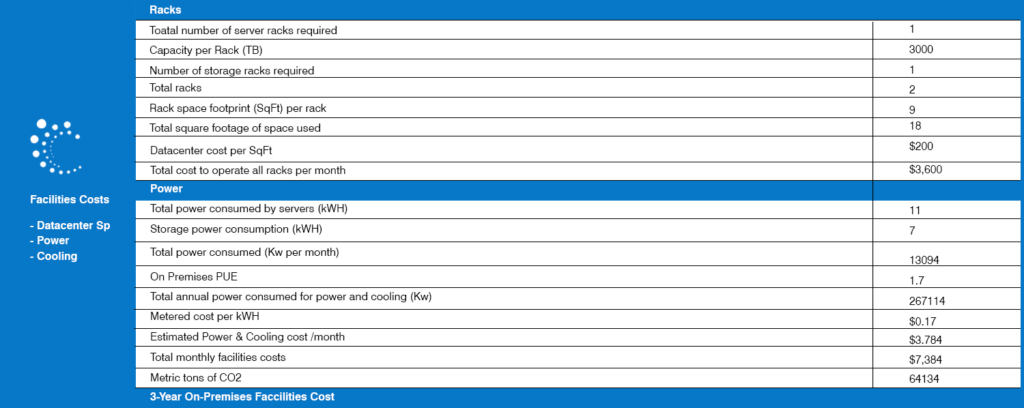
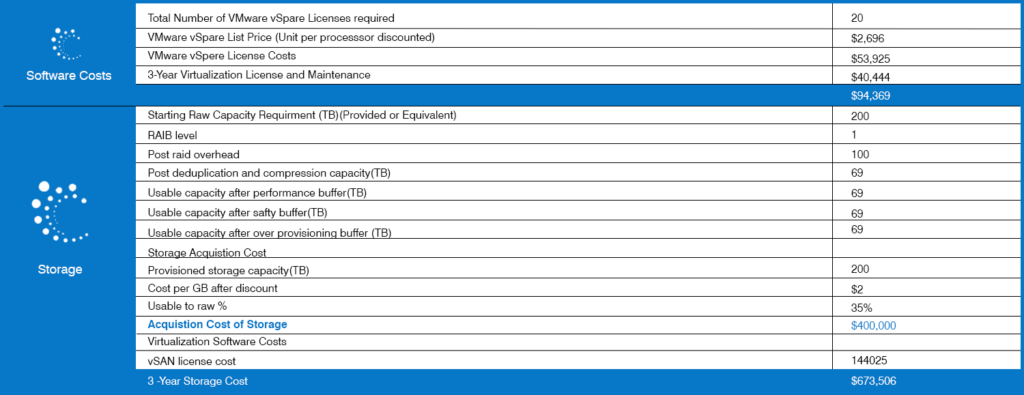


Assumptions, Exclusions & Exceptions in our Calculations.
- Low cost commodity infrastructure: Network, Load Balancer, Firewall, Backups
- Small, agile DevOps team to manage the infrastructure:
- Low data center costs by utilising fewer racks in an outsourced high quality data center
- Low staff costs by utilising high level of automation of small devops team and very simple architecture
- Advanced IT consolidation technologies like Docker, Containers are not included, calculations are at the level of virtual machines only.
- Typical enterprise IT infrastructure is significantly more expensive as it is based on expensive legacy “big brand” products, are inefficient and require a vast number of people to support.
- Typical enterprise infrastructure have high cost due to: Servers, Storage, Networking, Backup
- Staff: Large number of IT infrastructure staff working in many silos of IT teams including dedicated staff for procurement, architecture, facilities, networking, storage, backup, server management, VMware management. IT silos need to coordinate the activities between the teams hence are slow to provide business outcomes
- Please note that VMware cloud on AWS does not has backups service as part of their standard offering.
- 0 Comments
- CLOUD & DATA
- openstack
- privatecloud
- vmware
